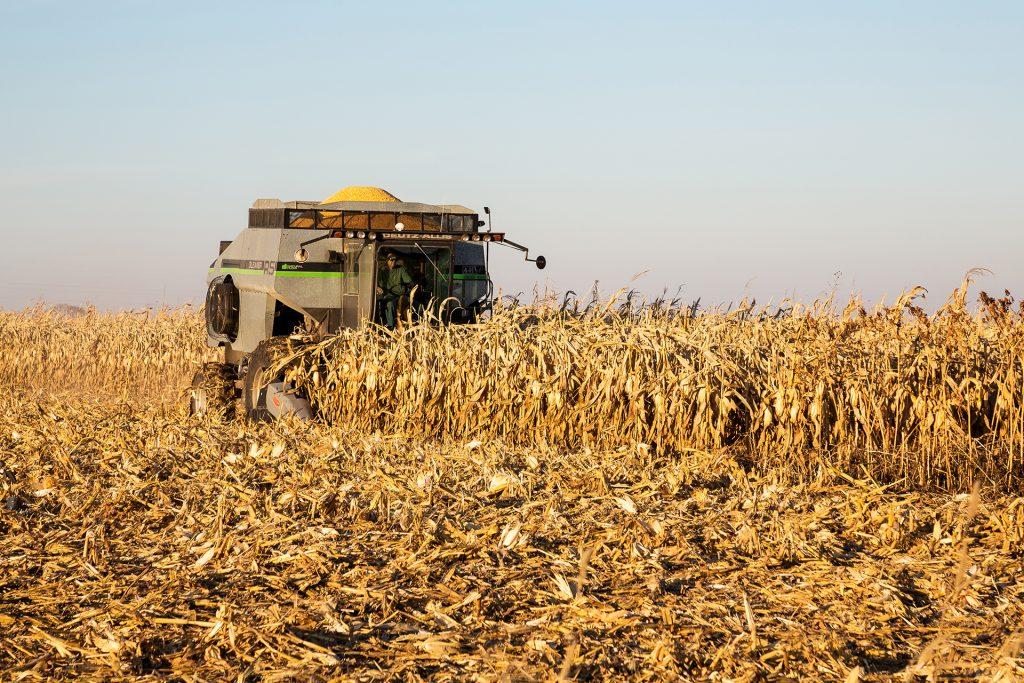Need for a new crop of farmers is on the rise, but novices have had a harder time starting farms in Johnson County than in neighboring counties thanks to certain planning and zoning policies.
Johnson County promised in the 2018 Comprehensive Plan to reconsider its agricultural-exemption policy following a months of heated debate, in part to support younger farmers in an aging field.
“We’ve got a serious issue with aging farmers, not only in the U.S. but in the state of Iowa,” said county Supervisor Mike Carberry.
As of 2012, the average American farmer was 58.3 years old, up 15.45 percent from 1982, according to the Agriculture Department Census of Agriculture. Johnson County demographics align with that statistic, one year above state average.
For comparison, the average American worker is around 42, according to the Bureau of Labor Statistics. Trends suggest that the 2017 Census of Agriculture, to be released in February 2019, will reflect further aging.
Critics of the agricultural-exemption policy, also known as the “40-acre rule,” say it creates barriers for young, beginning farmers.
“This is the most important issue for young farmers in the county,” said farmer Kate Edwards, 31, of Wild Woods Farm near Iowa City.
Iowa State Code 335.2 says land primarily adapted for commercial agricultural use is exempt from county zoning codes. Farmers can build permanent structures such as barns and homes on their land without rezoning, subdividing, and seeking permits.
RELATED: Guest opinion: Support young Johnson County farmers’ land access
Section 8:1.3 of the Johnson County Code of Ordinances says the same; however, it only defines operations larger than 40 acres as farms, in disagreement with Iowa’s use-based definition.
Beginning farms, most often run by young farmers such as Edwards, are small in size and profit 97 percent of the time, according to the 2012 Census of Agriculture.
With a $300,000 USDA loan limit, few beginning farmers can afford 40 acres, especially in pricey Johnson County. Nor do they need so many — Edwards farms on eight. Smaller farmers often rent land from larger operations to have the structures they need, limiting their autonomy.
Edwards, who started farming rented land in 2010, said she would be able to afford her own land by now if she could buy and build on fewer than 40 acres. She stays in Johnson County, though, because it is where she was raised, a generation removed from farming.
“This is my homeland,” she said. “This is the place I want to be.”
Many of her workers want their own small farms, however. She said they will likely leave Johnson County to start them.
Despite its limitations, the agricultural-exemption policy does have a purpose.
Josh Busard, the director of the county Planning Development & Sustainability Department, said his agency has three main goals: to preserve agricultural land, to preserve environmentally sensitive areas, and to accommodate growth.
While the department supports all types of agriculture, it’s his job to balance the varied interests.
“We’re portrayed as the bad guy,” he said. “That’s completely not the case. There are lots of different things that we look into.”
The size-based policy preserves agricultural land by limiting the sprawl of urban development into unincorporated farmland. It ensures that housing developments do not use small farms to claim exemption, then build homes uninhibited by residential zoning codes.
The 2018 Comprehensive Plan, a document updated every 10 years since 1998, was completed May 17. It directs the Planning & Development Department to study the issue and make a recommendation to the Board of Supervisors, ideally within two years.
Busard said his department will study the issue closely and discuss it with a wide cross-section of stakeholders. He will not know how likely change to the policy will be until the study is complete, he said.
Carberry, on the other hand, said change is “very likely.” The county should consider land use when zoning property, he said, but cautioned against loopholes that would allow urban sprawl.
He will push to ensure this plan does not unravel after his term ends in December, he said.
Reflecting the position of most local small farmers, Edwards is adamant that the policy should be updated to match the state’s use-based definition.



